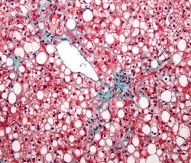
Plants with in-built micro-sensors
Scientists in Spain, Italy and the UK have developed a way to monitor the effect of climate change and pollution on the environment by creating a plant which has in-built sensors.
The PLEASED project (Plants Employed As Sensing Devices), led by the Italian SME WLAB and part-funded by the EU, has developed ‘talking plants’, which act as environmental monitors. Once inside the plant, the micro-sensors collect the plant’s signals, analyse them, combine them with those of other plants nearby, and produce a clear analysis of the environment around it. In other words, the plant will tell you how it feels and why.
Dr Andrea Vitaletti, project co-ordinator and chief technology officer at WLAB said: “If understanding is the first necessary step to change, plants can contribute by providing us with a valuable tool to better understand and monitor our environment. But then change is up to us.”
Neelie Kroes, European Commission Vice-President with responsibility for the Digital Agenda, added: “I am proud that EU funds are supporting the work of these biologists and computer engineers, helping to develop the most innovative SMEs and the best research centres in Europe.”
The data the PLEASED project collects is being made freely available in the hope that the PLEASED open community will grow and help them to achieve better and more general results by performing their own experiments and improving its design.
“The availability of a large, high quality dataset is necessary for our project to develop. To use these cyborg plants as sensing devices we need to develop classification algorithms capable of understanding the signals generated by plants,” said Vitaletti. “In particular, we hope that researchers will be able to test their own classification algorithms on the dataset.”
More than €1m of EU funding was invested in PLEASED, under the Future and Emerging Technologies programme.






